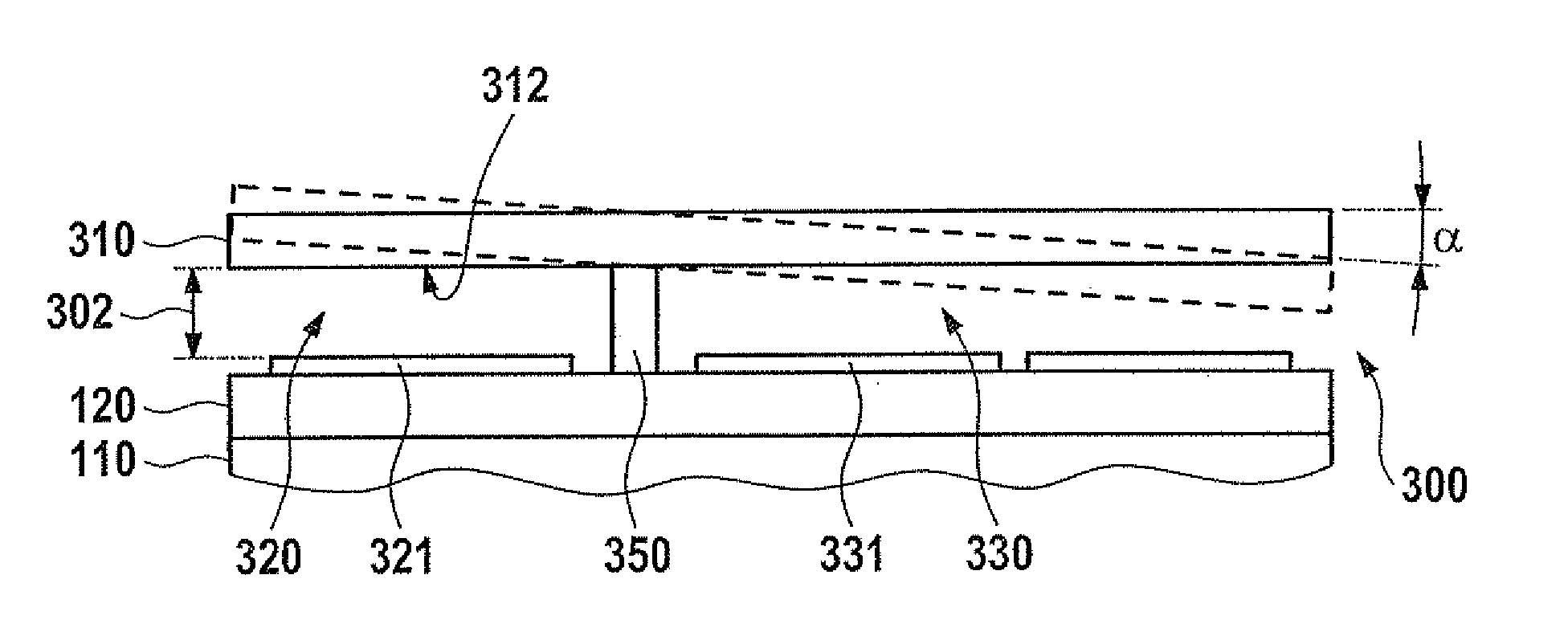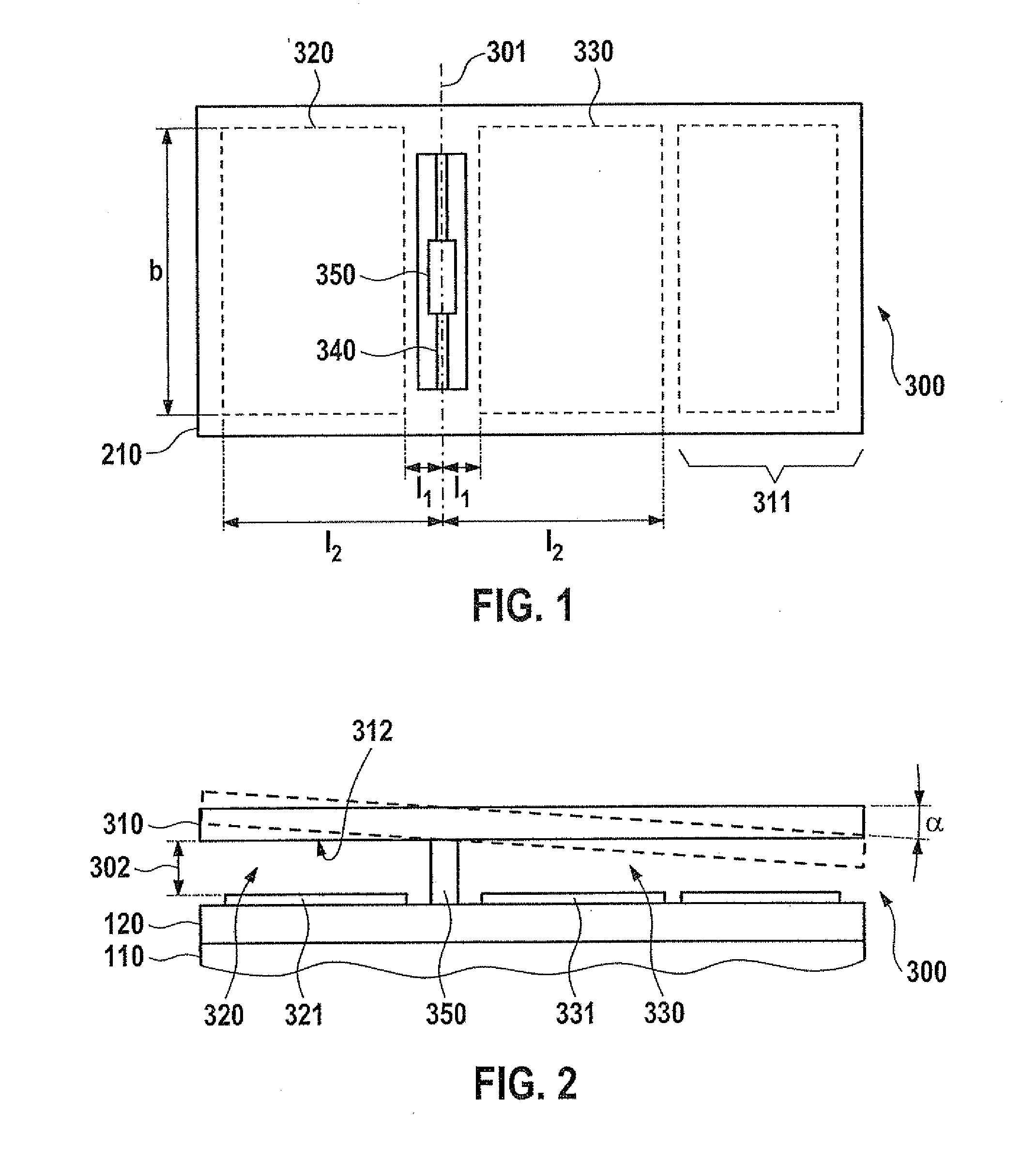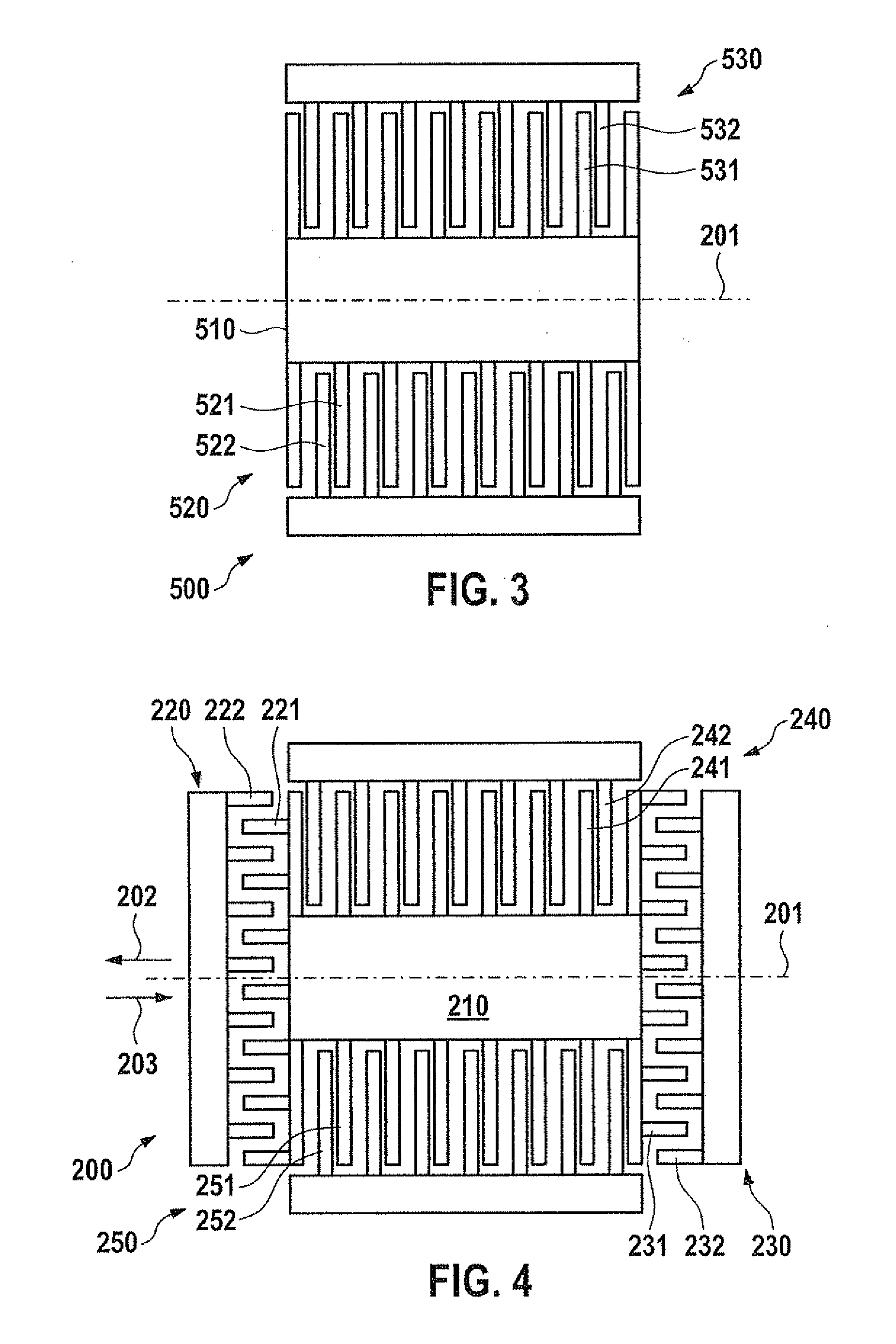Micromechanical component having a test structure for determining the layer thickness of a spacer layer and method for manufacturing such a test structure
a micromechanical component and test structure technology, applied in the direction of resistance/reactance/impedence, electrical/magnetic thickness measurement, instruments, etc., can solve the problem that the manufacturing method does not allow certain processing parameters for the sensitivity compensation of the z-acceleration sensor, and the response behavior of the sensor may be negatively influenced. problem, to achieve the effect of simplifying the manufacturing method
- Summary
- Abstract
- Description
- Claims
- Application Information
AI Technical Summary
Benefits of technology
Problems solved by technology
Method used
Image
Examples
Embodiment Construction
FIGS. 1 and 2 show a typical z-acceleration sensor (zES), which is designed in the so-called “rocker design.” Micromechanical sensor 300, which is shown in a top view in FIG. 1, generally includes a plate-shaped body 310, which, with the aid of a spring structure 340, is suspended rocker-like and deflectable in relation to a substrate 110 situated underneath. Plate 310, which is used as the seismic mass, may be connected via two torsion springs 340, for example, to a central carrier structure 350, the suspension of seismic mass 310 being selected in such a way that an auxiliary mass 311 results on one side, which causes a torque perpendicular to the substrate plane and therefore a deflection a of the rocker from its rest / zero position in the event of an acceleration of the sensor structure. The motion of rocker 310 is capacitively analyzed with the aid of two detection electrodes 321, 331, which are situated on both sides of carrier structure 350, and which each form a separate dete...
PUM
| Property | Measurement | Unit |
|---|---|---|
| thickness | aaaaa | aaaaa |
| activation voltage | aaaaa | aaaaa |
| equilibrium deflection | aaaaa | aaaaa |
Abstract
Description
Claims
Application Information
 Login to View More
Login to View More - R&D
- Intellectual Property
- Life Sciences
- Materials
- Tech Scout
- Unparalleled Data Quality
- Higher Quality Content
- 60% Fewer Hallucinations
Browse by: Latest US Patents, China's latest patents, Technical Efficacy Thesaurus, Application Domain, Technology Topic, Popular Technical Reports.
© 2025 PatSnap. All rights reserved.Legal|Privacy policy|Modern Slavery Act Transparency Statement|Sitemap|About US| Contact US: help@patsnap.com



